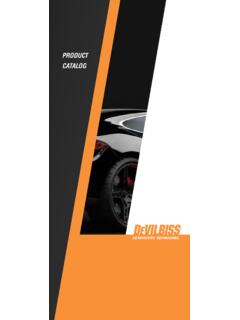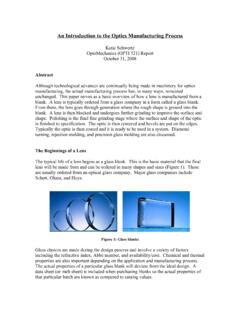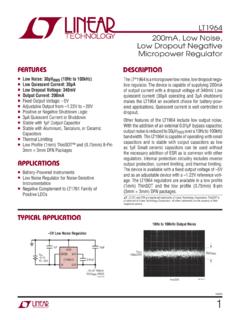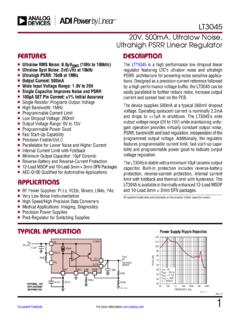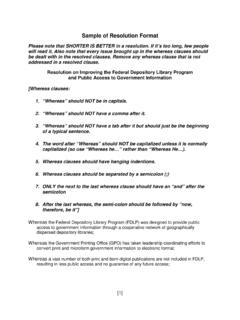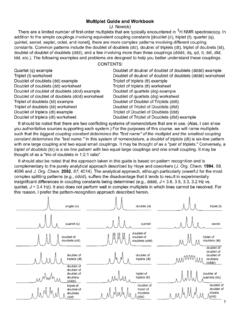Transcription of SPRAY GUN TROUBLESHOOTING AND PREVENTIVE …
1 SB-2-001-J (7/2015)1 / 12 IMPORTANT: Before using this equipment, read all safety precautions and instructions in this manual. Keep for future GUN TROUBLESHOOTING AND PREVENTIVE MAINTENANCE GUIDESB-2-001-J (7/2015)2 / 12 HAZARD CAUSE SAFEGUARDSFire Solvent and coatings can be highly Adequate exhaust must be provided to keep air flammable or combustible free of accumulations of flammable vapors. especially when sprayed. Smoking must never be allowed in the SPRAY area. Fire extinguishing equipment must be present in the SPRAY SPRAY During cleaning and flushing, Wear eye protection.
2 Solvents can be forcefully expelled from fluid fluid and air passages. Some solvents can cause eye Toxic Certain materials may be harmful Follow the requirements of the Material SafetySubstances if inhaled, or if there is contact Data Sheet supplied by your coating material with the skin. manufacturer. Adequate exhaust must be provided to keep the air free of accumulations of toxic materials. Use a mask or respirator whenever there is a chance of inhaling sprayed materials. The mask must be compatible with the material being sprayed and its concentration.
3 Equipment must be as prescribed by an industrial hygienist or safety expert, and be NIOSH Hazard Halogenated hydrocarbon solvents Guns with stainless steel internal passageways Incompatible - for example; methylene chloride may be used with these solvents. However, Materials and 1, 1, 1 - Trichloroethane are aluminum is widely used in other SPRAY not chemically compatible with application equipment - such as material pumps, the aluminum that might be used cups and regulators, valves, etc. Check all in many system components. The equipment items before use and make sure chemical reaction caused by these they can also be ued safely with these solvents.
4 Solvents reacting with aluminum Read the label or data sheet for the material can become violent and lead to an you intend to SPRAY . If in doubt as to whether equipment explosion. or not a coating or cleaning material is compatible, contact your material PRECAUTIONSThis manual contains information that is improtant for you to know and understand. This information relates to USER SAFETY and PREVENTING EQUIPMENT PROBLEMS. To help you recognize this informa-tion, we use the following symbols. Please pay particular attention to these information that tells how to prevent damage to equip-ment, or how to avoid a situation that may cause minor that you should pay special attention safety information - A hazard that may cause serious injury or loss of following hazards may occur during the normal use of this equip-ment.
5 Please read the following chart before using this (7/2015)3 / 12 Figure 3 Gravity Feed Gun With Cup on TopGravity feed guns are ideal for small applications such as spot repair, detail finishing or for finish -ing in a limited space. They require less air than a suction feed gun and usually have less pressure feed system is normally used when large quantities of material are to be applied, when the material is too heavy to be siphoned from a con-tainer or when fast application is required. Figure 5 Pressure Feed Air CapPRINCIPLES OF AIR SPRAYS pray application is perhaps the simplest method of coating where a sizeable area or volume of material is involved or when intricate shapes and irregular surfaces require painting.
6 SPRAY will give the most uniform film thickness making it easy to obtain a smooth air SPRAY gun is a tool which uses compressed air to atomize paint, or other sprayable material, and to apply it to a surface. Air and material enter the gun through separate passages, and are mixed at the air cap in a controlled pattern. Air SPRAY guns may be classified in various ways. Two ways of classifying guns are by the location of the material container and the material feed system. Figure 1 shows a gun with a cup attached below. This is called Suction Feed which draws material to the gun by suction.
7 Figure 3 is a gun with a cup attached above. This is called Gravity Feed - the material travels down, carried by gravity. Figure 4 shows a mate-rial container some distance away from the SPRAY gun. This is Pressure Feed - the material is fed by positive pressure. Suction feed is easily identified by the fluid tip extending slightly beyond the face of the air cap, as shown in Figure 2. Suction feed guns are suited to many color changes and to small amounts of material, such as in touchup or lower production operations. Figure 2 Suction Feed Air CapFigure 4 typical Pressure Feed Gun With Remote CupFigure 1 Suction Feed Gun with Attached CupFluid TipAir CapAir CapFluid TipSB-2-001-J (7/2015)4 / 12 Internal and External Mix GunsAn external mix gun mixes and atomizes air and fluid outside the air cap.
8 It can be used for applying all types of materials, and it is particularly desirable when spraying fast-drying paints such as lacquer. It is also used when a high quality finish is 6 External Mix GunFigure 7 Internal Mix GunThis gun mixes air and material inside the air cap, before expelling them. It is normally used where low air pressures and volumes are available, or where slow-drying materials are being sprayed. A typical example is spraying flat wall paint, or outside house paint, with a small compressor. Internal mix guns are rarely used for finishing when a fast-drying material is being sprayed, or when a high quality finish is (High-Volume/Low-Pressure)HVLP uses a high volume of air (typically between 15-22 CFM) delivered at low pressure (10 psi or less) to atomize paint into a soft, low-velocity SPRAY a result, far less material is lost in overspray, bounce-back than with conventional air SPRAY .
9 This is why HVLP delivers a dramatically higher transfer efficiency (the amount of material that is actually applied to the part) than higher pressure SPRAY systems. SPRAY a horizontal test pattern (air cap horns in a vertical position). Hold the trigger open until the paint begins to run. There should be even distribu-tion of the paint across the full width of the pattern (see Figure 10). Adjust with fan pattern adjust-Figure 9 Suction Feed & Gravity Feed System ComponentsFigure 8 Air Cap Overspray, Conventional/HVLPThe HVLP SPRAY gun resembles a standard SPRAY gun in shape and operation.
10 HVLP is growing in popularity and it has also been judged environmentally acceptable due to its high transfer can be used with low to-medium solid mate-rials, including two-component paints, urethanes, acrylics, epoxies, enamels, lacquers, stains, primers, etc. More recently developed HVLP air caps can also satisfactorily atomize even high solid and Gravity Feed Equipment Hook-UpConnect the air supply from the compressor outlet to the air filter regulator inlet. Connect the air supply hose from the regulator outlet to the air inlet on the SPRAY gun. After the material has been reduced to proper consistency, thoroughly mixed and strained into the cup, attach the gun to the (7/2015)5 / 12 Figure 10 Horizontal Test Pattern with Even Material DistributionIf the pattern produced by the above test appears normal, rotate the air cap back to a normal spraying position and begin spraying (Example - a normal pattern with a #9000 air cap will be about 9" long when the gun is held 8" from the surface.)
